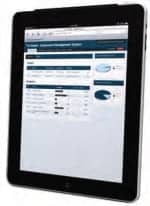 When I began my career as a BMET, in 1985, it was impressed upon me how important details were. We BMETs were sometimes referred to as “tweakers”. Pocket protectors were often a dead give away to our job title, and many of those pocket protectors carried a small screwdriver.
When I began my career as a BMET, in 1985, it was impressed upon me how important details were. We BMETs were sometimes referred to as “tweakers”. Pocket protectors were often a dead give away to our job title, and many of those pocket protectors carried a small screwdriver.
Calibration of the medical equipment of that era was often accomplished by slight adjustment to small potentiometers. ECG maintenance included stylus pressure and temperature checks. If they used ink, like the old Marquette units, then we checked ink reservoir levels and even lapped pen tips. Frequency response and dampening measurements as well as paper chart speed verification often revealed adjustments were necessary.
Conductive flooring, and line isolation monitoring systems were starting to be phased out of the surgical suites but still fairly common. Some of the equipment was old, and individual units were like old friends. We knew what to expect before the calibration was even checked. When a service manual was required, it was always a printed copy, not something you could view on a computer screen and certainly not something you received in an email. Tech support was found at the end of a wire coming out of the wall, mobile phones were not common, laptops didn’t exist, and portable computers were the size of today’s desktop, sporting a 9-inch or so monochrome CRT as a display.
Not only were the details of fine tuning and adjustment for calibration critical, but so were communication skills and documentation. This was my first experience in the biomedical electronics field. Western Wisconsin Technical College did not spend as much time teaching people skills as they did electronic theory and troubleshooting. When a service call came in from a hospital many miles away, I was on my way to fix the problem. Some of those problems could have been solved with a few simple questions over the phone. So in some ways, I had to learn on the go how to deal with users in order to make a complete repair of the whole “system”.
The Digital Era
Today, details are even more important than ever. Communication and documentation have never been more critical. The job of the BMET is still the same in many ways, but the forms have changed. Electronic communication has taken the place, in many instances, of verbal communication and handwritten or printed copy. The situation has improved tremendously, thanks to voicemail, email, text messages, pdf files, DVDs, and faxes.
Still, the customers we serve are no less human. with increasing responsibilities, they are often times preoccupied with the tasks at hand. This makes communication more challenging and critical.
The way we maintain equipment has changed dramatically as well. Calibration is more often accomplished by software settings, revisions, and component replacement than with the twist of a screwdriver. Discreet component replacement is nearly a lost art, and the board swap is the norm rather than the last resort. Many more manufacturers simply request the unit be shipped to the factory for repair these days.
This changes the service reporting somewhat. Now we have to track RMA numbers, software versions, and rev levels of the replacement boards. User training, failure rates, user errors, and voluntary and involuntary Medwatch reports submitted to the FDA are types of data we keep. The maintenance record itself has evolved from hard copy to computerized maintenance management systems, capable of recalling details in seconds with a simple query. Manufacturers are held to a much higher level of tracking and control today as well. The Safe Medical Devices Act, Current Good Manufacturing Practices requirements, and the Quality Systems regulation have all had a profound impact on today’s medical device manufacturing.
Asset Management
An important component of equipment management, particularly for an in-house program, is asset management. Equipment support by the manufacturer and the direction of the industry are significant factors in equipment evaluation and selection.
These are tough times and nobody gave us a crystal ball. Still, we are expected to make sound decisions. Questions we must ask may include the following:
- Will this technology interface with systems we already use?
- How long will there be support for these devices?
- What technology will be required in the future?
- Can it be serviced and maintained in-house?
- What is the cost of ownership?
Again, details are critical. Being an effective BMET today is challenging, sometimes frustrating, and yet very rewarding. Supporting one of the biggest industries in the national spotlight today, and helping to control the cost of healthcare while bringing the newest technologies onboard, keeps us enthusiastic. We need to stay abreast of the developing technologies.
Teamwork
The way we contribute to the organization involves much more than just repair and maintenance. Sometimes we are relied upon for input too. Our perspective is valuable. Knowing where to find information is as important as what we know. We can research the details that are essential to good decisions for the overall health of our organization.
I recently read a book about Steve Jobs. He was a brilliant man, but many of his innovations not his, but were the result of his engineers. He recognized great ideas. He was able to take multiple ideas and combine them into a product, and ultimately a corporation. It takes a team, and each member of that team has something to offer.
Where will we be in the next 30 years? No one can say for sure. But we do know this: There is a lot of exciting change to come, and we BMETs will be at the forefront, providing the needed details.
Tim Hoof, CBET, is Biomedical Equipment Support Specialist for the USPHS Indian Health Service in Browning, Mont.





